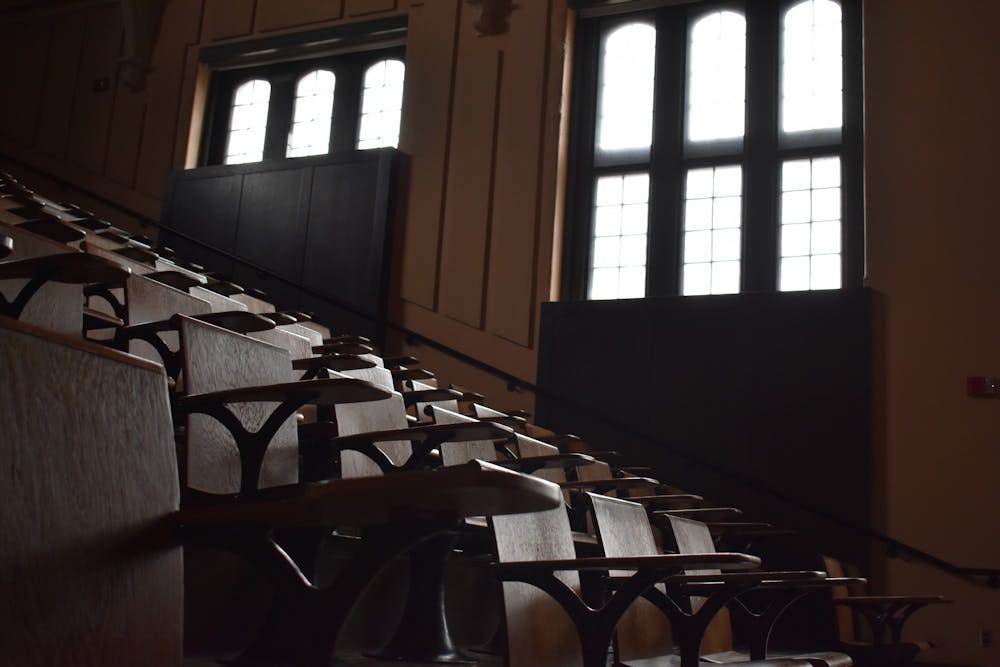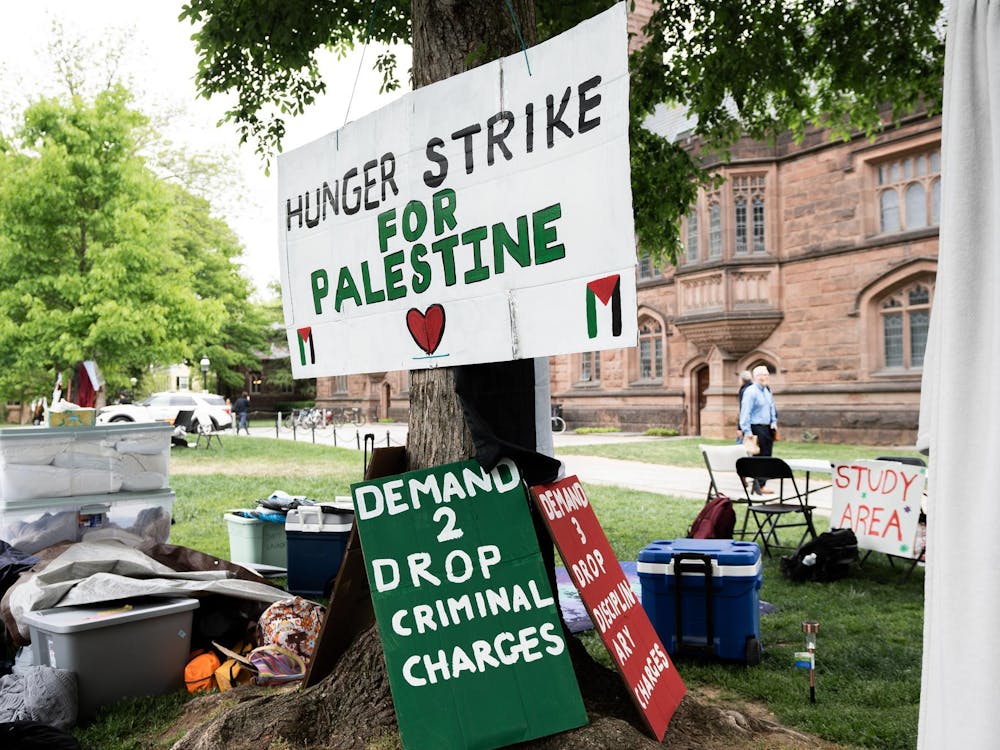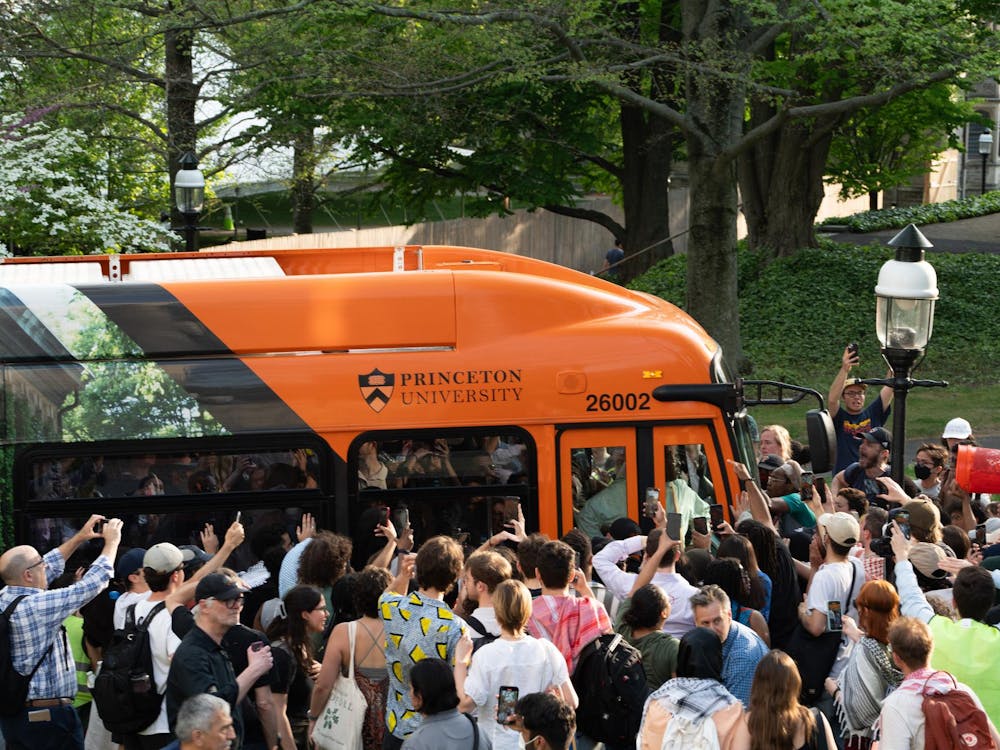This coming fall, over half the courses offered at Princeton will have 15 students or fewer. Computer science remains the most in-demand department, with eight percent of all course seats on campus falling in its domain. And two of the most historically popular certificate programs — visual arts and creative writing — dropped the number of course seats they’ll offer, as compared to this spring.
In February, The Daily Princetonian completed an analysis of course enrollment, examining how many courses and seats were filled in certain departments. Now, following course enrollment for the Fall 2022–23 semester and as the campus prepares for a major expansion of the student body with the addition of New Colleges East and West, the ‘Prince’ reexamined academic scarcity through a new lens, breaking down the courses offered by size, distribution requirement, and department.
Next fall, the University will offer 32,882 seats in 971 classes. This semester, the University offered 31,224 seats in 999 classes, compared to last fall where it offered 32,081 spots in 965 classes. These numbers do not include writing seminars as they are not currently visible on the Registrar’s website.
In sum, the number of courses and seats offered has varied only narrowly from year to year.
Twenty-six classes next fall have unlimited enrollment spaces, 15 of which are in the Politics department. The number of seats for these courses was calculated by taking the highest enrollment in the past year, or, for new courses, taking the current enrollment and adding 20.
For courses with enrollment cap, the University calculates course maximums based on the capacity of the classroom in which the course was taught.
“For most courses, the listed capacity is based on historical enrollment and the size of the requested room,” Deputy University Spokesperson Michael Hotchkiss previously wrote in an email to the ‘Prince.’ “The listed capacity is not generally a hard cap on enrollment. (The exception is seminars, which are limited in size to ensure an appropriate academic experience.)”
Next semester, there are an abnormal number of classes with an unlimited number of seats — 26. This number has not topped 20 since the Spring 2019–2020 semester, when there were 24.
Paul Lipton, the associate dean of undergraduate studies in the School of Public and International Affairs, previously told the ‘Prince’ that course capacities could change from year to year when faculty leaves coincidentally overlap.
“The other issue is what we sometimes see is faculty leave schedules, which are quite generous here at the University, which will impact which courses we're offering. That will especially impact required courses,” he said.

The ‘Prince’ also looked at the breakdown of seats in terms of distribution requirements and class size. Nearly a quarter of classes offered this semester — 23.6 percent — fulfill the Literature and the Arts (LA) requirement. On the other hand, fewer than four percent of courses fulfill the Epistemology and Cognition (EC) or Ethical Thought & Moral Values (EM) requirements.
The percentages do not add up to 100 for a few reasons. First, not all courses fulfill distribution requirements. Furthermore, some courses can fulfill two distribution requirements, and those are counted towards the number of both of the relevant requirements.
Those who like smaller classes are in luck, as classes with 15 seats or fewer consistently make up approximately half of the classes offered at the University. Next semester, 53 percent of classes offered fall into this category. Twenty percent have between 16 and 30 seats, 24 percent have more than 30 seats, and three percent have an unlimited number of seats.
Previous reporting from the ‘Prince’ analyzed courses from the three most popular concentrations — economics (ECO), computer science (COS), and the School of Public and International Affairs (SPIA) — as well as two of the most in-demand certificate programs, Visual Arts (VIS) and Creative Writing (CWR).
In the fall, creative writing, economics, and visual arts will nominally decrease the number of seats offered this semester from the previous two semesters. Both COS and SPIA slightly increased the number of seats open from the past several semesters.
When considering classes listed by multiple departments, commonly referred to as “cross-listed,” the ‘Prince’ categorized the course by the first listed department. Several professors who spoke with the ‘Prince’ endorsed this practice.
Jeffrey Whetstone, the director of the Visual Arts Program, told the ‘Prince’ that it will be a long time before the number of courses offered by his program can increase because of staffing limitations.
“Hiring new faculty is a long process, and we need to get started on that,” he said. “But we can’t just acquire new faculty and make new classes, because we don't have the people to teach those classes. It's a long term problem, and it's not going to get solved in one semester.”
Marion Young ’00, the executive director of the Lewis Arts Center, spoke to how the elimination of the application to Creative Writing courses will affect enrollment in the department.
“I think that we’re gonna have more people trying to enroll,” she said. “What will be interesting is what we learn about how many students were interested and not able to get in. We’ve taken a step towards a bigger, greater inclusivity. Now we have to monitor what does that mean about demand and how do we ensure that a student who is very committed to creative writing and pursuing are able to get in.”
The chart below shows the number of seats offered in each concentration in the University. The departments that offer the most courses are computer science (2,555), economics (2,315), and mathematics (2,310).
The classes of 2023, 2024, and 2025 enrolled in classes from April 12 to April 14, and the Class of 2026 will enroll on September 2. There are two add/drop periods for the upcoming semester: April 25–29 and Sept. 6–20.
Charlie Roth is a Staff News Writer and Assistant Data Editor for the ‘Prince’, focusing on local town coverage. He can be reached at charlieroth@princeton.edu or @imcharlieroth on Twitter or Instagram.









